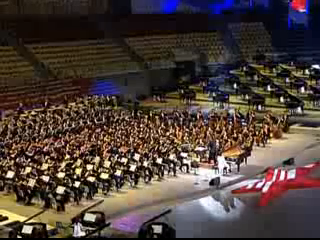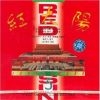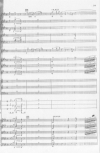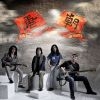Media file:
mus. 2.6
Title:
Red is the East and the Internationale in the Yellow River Concerto
Source:
Heidelberg catalogue entry, DACHS Archive
Keywords:
Red is the East, contemporary China, Yellow River Concerto, Lang Lang, the Internationale
Red is the East and the Internationale in the Yellow River Concerto

In all of the model works, “Red Is the East” is cited at the most critical and pivotal points of the plot, habitually marking these in a grand final apotheosis of victory that is further underlined by musical accompaniment, gestures, and, of course, lighting and color. Quotations from the seminal songs of the Cultural Revolution at key points in the model works thus function in a manner similar to quotations from the ancient sages in traditional Chinese texts: in an act of propagandistic transfer they are invoked for their authoritative aura. The use of “Red Is the East” lends legitimacy to everything and everybody it is associated with (Chen 1995, 10 and Lu 2004, 106).
As such, “Red Is the East” also appears in the Yellow River Piano Concerto. In its final movement, called “Defense of the Yellow River” and appropriately subtitled “Chairman Mao summons the people to fight,” “Red Is the East” is quoted several times, first as an allusion to illuminate Mao’s call to fight (Yin 1969, 123), and later in a final virtuoso apotheosis (Yin 1969:144). At this point in the final movement of the multimedia performance by Chinese star pianist Lang Lang in August 2007, as four Chinese symphony orchestras join together to put ”Red Is the East” (Yin 1969:144ff) in scene, one hundred female pianists all dressed in white wedding gowns join the soloist in playing the song: in an ingenious modulation by means of a Chinese folk tune the music leads directly from “Red Is the East” into a short quotation from the “Internationale” (mus. 2.6: at 4.35’ “Red Is the East”; at 5:45 “Internationale”). It is a roaring spectacle accompanied by a huge projection of a rising sun on all of the screens in the auditorium. This, arguably the most sublime performance of “Red Is the East” to date, illustrates the presence of the avatar of the Cultural Revolution in the age of the global market and reinforces the idea of a continuous revolution in culture.



































